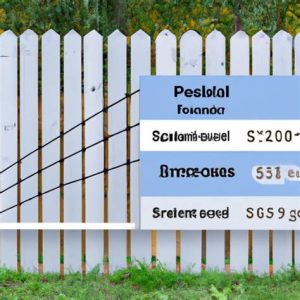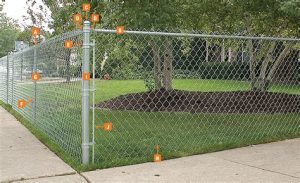Learn how to navigate local zoning regulations, choose compliant fence materials, and ensure proper installation with permits and licensed contractors.Building a fence can be an exciting project that enhances your property’s aesthetics and provides privacy and security. However, before you dive into the details of design and construction, it’s crucial to understand the legal landscape surrounding fencing in your area. Complying with local laws is not just a formality; it’s essential for ensuring that your fence is built safely and legally. From zoning regulations and property lines to purchasing the right materials and obtaining necessary permits, each step requires careful consideration. In this blog post, we will guide you through the vital aspects of complying with local laws when embarking on your fencing project. By taking these factors into account, you can avoid legal headaches and enjoy your new fence worry-free.
Understanding local zoning regulations
When it comes to building a fence, one of the first and most crucial steps is understanding local zoning regulations. These regulations vary widely depending on your specific location, and they often dictate various aspects of fence construction, including height, material, and position on your property.
Before you proceed with your fencing project, it’s essential to check the zoning laws applicable to your area. Many municipalities stipulate how tall your fence can be, especially when it comes to front yards. For instance, residential zones might limit front yard fences to 3-4 feet, while back yard fences could go up to 6-8 feet. On the other hand, commercial zones may have different restrictions designed to maintain a consistent aesthetic in the neighborhood.
Moreover, some zoning jurisdictions require homeowners to obtain a variance if their desired fence design does not comply with existing regulations. This process often involves applying for permission and possibly attending a public hearing. Understanding these local zoning regulations before starting your project can save you time and prevent potential fines or the need to remove a non-compliant fence later on.
Researching property line and easements
When planning to build a fence, one of the most crucial steps is researching property lines. Knowing the exact boundaries of your property helps prevent potential disputes with neighbors and ensures compliance with local regulations. Property lines are typically established by a legal survey, but you can often find this information through your local office or municipal website.
In addition to understanding your property lines, it’s important to investigate easements. Easements are legal rights to use a portion of land for a specific purpose, which may impact where you can place your fence. Common examples include utility easements, where power or water lines run through your property. Building a fence over an easement can lead to legal issues, so always verify any easements on your property before installation.
- Check your property’s deed for boundary descriptions.
- Visit your local zoning office for maps and surveys.
- Consult with a licensed surveyor if necessary.
- Communicate with neighbors to discuss property boundaries amicably.
Choosing fence materials approved by local codes
Choosing the right fence materials is not just about aesthetics or durability; it also requires compliance with local codes. Understanding these codes is crucial to ensure your fence is legal and safe. Various materials may be regulated based on factors like height, appearance, and durability, and failure to comply can lead to fines or even mandatory removal of the fence.
Before you start shopping, it’s essential to consult your town or city’s guidelines. Many local jurisdictions provide specific lists of approved materials, which can include wood, vinyl, metal, and composite options. Each material comes with its own regulations, including color restrictions and structural integrity requirements.
| Material | Common Restrictions |
|---|---|
| Wood | Height limitations, treatment requirements to resist rot |
| Vinyl | Color specifications, UV resistance |
| Metal | Must be rust-proof, height restrictions |
| Composite | Appearance standards, color limitations |
Additionally, it’s advisable to verify if there are any environmental restrictions that could affect the choice of materials. For instance, certain materials may not be suitable for areas prone to high moisture or pest activity.
Obtaining necessary permits and licenses
When it comes to erecting a fence on your property, understanding and adhering to local laws is crucial. One of the first steps in this process is obtaining the necessary permits and licenses. Many municipalities require property owners to secure permits before construction, especially for fences that exceed specific heights or are situated near property lines.
The specific requirements for permits can vary widely depending on your location. Typically, you can find this information on your local government’s website or by visiting the planning and zoning office in your area. It’s essential to understand not only the type of permits needed but also the associated fees and application processes.
Additionally, failing to obtain the appropriate licenses or permits can lead to penalties, including fines or even the requirement to remove the fence after installation. To ensure compliance, it’s advisable to keep clear documentation of all permits and licenses obtained, as this can provide peace of mind and protect your investment.
Hiring a licensed contractor for installation
When building a fence, hiring a licensed contractor is one of the most crucial steps to ensure that your project complies with local regulations and standards. A licensed contractor not only brings their expertise to the table but also has a comprehensive understanding of the local building codes. By choosing a professional, you can expect a well-constructed fence that not only enhances your property but also adheres to all zoning laws.
Before you start the hiring process, it’s essential to conduct thorough research. Look for contractors with a solid reputation in your area. Reading reviews and asking for recommendations from friends or family can lead you to reliable professionals. Additionally, always verify that the contractor is licensed and insured. This not only protects you but also ensures that the contractor has met specific state qualifications and is trained to follow safety protocols.
Once you’ve narrowed down your options, arrange for consultations. During these meetings, discuss your fencing requirements and any specific challenges your property may face. A qualified contractor should provide insights into the best materials and techniques, and give you a detailed estimate of the costs involved. This open communication is vital in establishing a good working relationship and ensuring that your vision for the project is realized.
Frequently Asked Questions
What are the initial steps to take before building a fence?
Before building a fence, it’s essential to check local zoning laws, obtain necessary permits, and review any homeowners’ association (HOA) regulations that may apply.
Why is it important to understand local zoning laws when building a fence?
Local zoning laws dictate the height, style, and location of fences, ensuring that your construction complies with municipal regulations and doesn’t infringe on neighbors’ rights or property lines.
What types of permits might I need to build a fence?
You may need a building permit or a fence permit, which can vary by location. It’s best to consult your local government or zoning office to determine specific requirements.
How can I find out about property lines before constructing a fence?
You can find out about property lines by reviewing your property survey, checking with your local tax assessor’s office, or hiring a surveyor for a professional assessment.
What are some common regulations regarding fence height and placement?
Common regulations often limit fence heights to 4-6 feet in residential areas and may require a certain setback from property lines. It’s crucial to verify these specifications with local ordinances.
What should I do if my neighbor contests my fence plan?
If your neighbor contests your fence plan, consider having a discussion to address concerns amicably. If necessary, you can consult a mediator or check local conflict resolution guidelines.
Are there any specific materials or styles required by local regulations?
Some local regulations may specify approved materials or styles, particularly for aesthetic reasons. Always verify with your local municipality or HOA to comply with these standards.





